2 April 2013
Updated: The strange case of the sinking pontoon in Brazil
Posted by Dave Petley
NB: now corrected with images of the site.
Over the weekend there has been a number of news stories about a peculiar event in Brazil on Thursday night. This news story from the BBC is typical:
A mining company in Brazil says an inquiry has begun into the cause of the collapse and sinking of a floating port on the Amazon river, in Amapa state. Rescue operations are under way to locate six workers who went missing. An official blamed a big wave that allegedly washed over the banks of the Amazon, dragging with it cranes, lorries and people … “There was a wave that washed over the banks of Santana, even reaching the island of Santana. This wave also hit the company’s port,” Paulo Oliveira, a spokesman for Anglo Ferrous told the local channel TV Amapa. Other witnesses, however, told reporters that the quick and powerful water surge was a consequence of the landslide and the sinking of the floating port facilities, which were used for loading ships with iron ore.
In a statement, Anglo-American said the causes of the collapse were being investigated. “An iron ore vessel was docked at the pier for loading at the time and was hit by flood waters. Flood waters also dragged vehicles and shipping equipment into the river,” the company said. Authorities avoided pointing fingers before the experts complete their tasks. “Right now, it would be inappropriate to try and find a culprit, but after a detailed survey, we will get to understand the causes and be able to attribute responsibilities,” the state governor of Amapa, Camilo Capiberibe, said.
The same report also has this image of the site:
Other reports suggest that a landslide occurred. For example, Fox News report:
Details on the exact cause of the accident, which occurred shortly after midnight at the port of Santana and is being investigated, weren’t immediately known. Firefighters from Brazil’s northern Amapa state said a stretch of riverbank roughly 200 meters long collapsed, causing a pier to sink into the water … “The water is very murky and about 25 meters deep, which is making the search difficult,” a firefighter said. He added that heavy rains in recent days suggest a possible landslide. On the other hand, Anglo-American said in a statement that “initial information attributes the accident to an unusually large mass of water moving along the river, as other ports located in the region were also affected.” A ship captain present at the port initially described the incident as a tsunami, a theory that was later discarded. One vessel loading iron ore at the pier was damaged, a shipping source said.
All of the evidence suggests to me a failure of the land on the river bank, which then generated the wave that was observed by the ship’s captain. Interesting, if so his observation of a tsunami is correct, albeit a very localised one. These sort of collapse events can be very dramatic, as an earlier (and rather larger) event on a Brazil dockside (in Manaus in 2010) demonstrated:


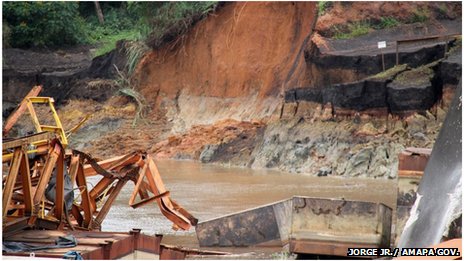
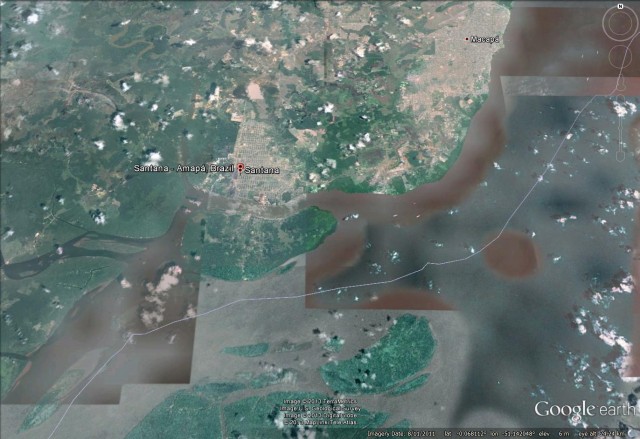
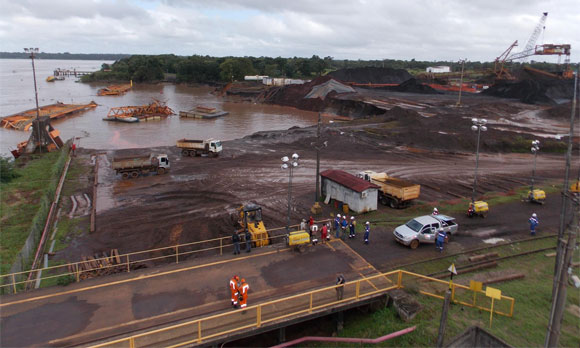
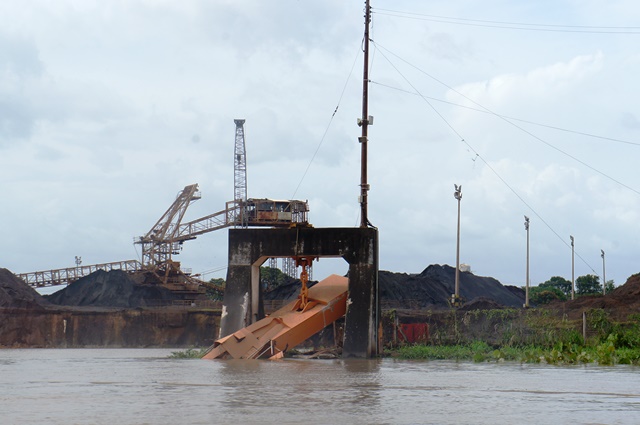
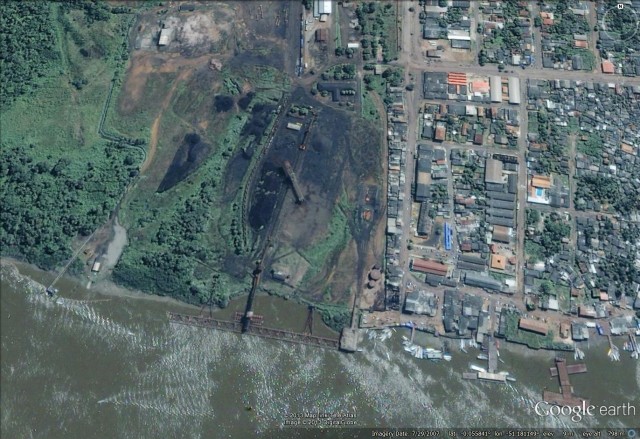
 Dave Petley is the Vice-Chancellor of the University of Hull in the United Kingdom. His blog provides commentary and analysis of landslide events occurring worldwide, including the landslides themselves, latest research, and conferences and meetings.
Dave Petley is the Vice-Chancellor of the University of Hull in the United Kingdom. His blog provides commentary and analysis of landslide events occurring worldwide, including the landslides themselves, latest research, and conferences and meetings.
Hello Dave Petley! I can help you with this, because generally things from the northern region of Brazil are poorly reported.
First, you missed the Google Earth location. It’s actually a little bit to the west: -0.056788,-51.181811. The one you posted is the public one.
The port was ~50 years old and, accordingly to a comment on one of your links, the company seemed not to care too much about the soil integrity. And that the port is on calm side of the river, behind an island.
Here are some links with more photographs.
Before:
http://vfco.brazilia.jor.br/ferrovias/efAmapa/portoSantana.htm
http://www.amapatec.com/2012/06/acervo-historico-fotografico-do-estado_7058.html
http://santanadoamapa.blogspot.com.br/2012/08/o-departamento-nacional-de-producao.html
And after (“alta” means higher resolution):
http://www.agenciaamapa.com.br/fotos/4536/
http://www.agenciaamapa.com.br/fotos/4553/
http://www.agenciaamapa.com.br/fotos/4557/
One of the best pictures is on this link, that it’s marked the region that collapsed.
http://www.portalamazonia.com.br/editoria/cidades/ma-estrutura-do-pier-da-anglo-american-causou-acidente-no-amapa/
Also, according this last link (from 02/April), officials already stated that what caused the landslide was not a big wave, but the collapse of the terrain itself. And there were approximately 500 thousands tons of iron ore over the affected region. The company has already to pay a fine of ~10 million dollars, for the environmental damage to the river.
And last, there’s a video footage from a security camera from a small port nearby (it doesn’t say where exactly).
http://www.youtube.com/watch?v=feeNNDcdM64
You can see that the waters are very, very calm on that region. A relatively big wave scares some people and drive away some boats (about 14:40 on the video), but like you said, probably caused by the landslide.
The mining company just stated that it was caused by a natural phenomenon to avoid having to pay the financial consequences for those people who died (actually there are 3 missing, not 2), and for the environmental damages. Fortunately, they cannot corrupt the facts.
I hope I could contribute to your post about this particular landslide. As an atmospheric sciences student, I often like to learn a little bit about other fields, like landslides. And your blog has been an excellent tool for that! Thanks!
Raphael Rocha
Undergrad Meteorology student at UFRJ
Hi the photo listed as the actual site is not. It is the woodchip loading dock just down stream. The Santana site on google images had the rail loader in the centre of dock. Six people were killed. The landslide extends nearly 100 m inland. This video shows some of the destruction.
http://globotv.globo.com/rede-globo/jornal-hoje/v/bombeiros-ainda-tentam-localizar-trabalhadores-desaparecidos-no-rio-amazonas/2487971/
Thanks for providing all that information. What about this report? It says that Anglo was incompetent and the nearby gold mine Beadell Resources may now have problems….. What do you think?
http://bestonlinebroker.co/p/3999693490/beadell-resources-why-the-silence-after-a-major-mining-disaster